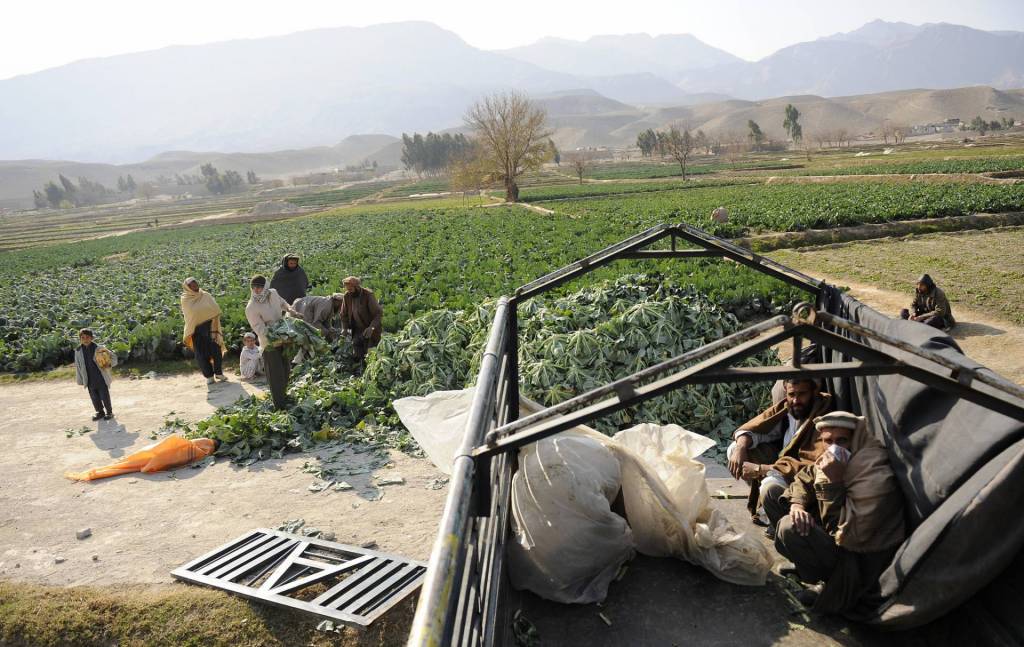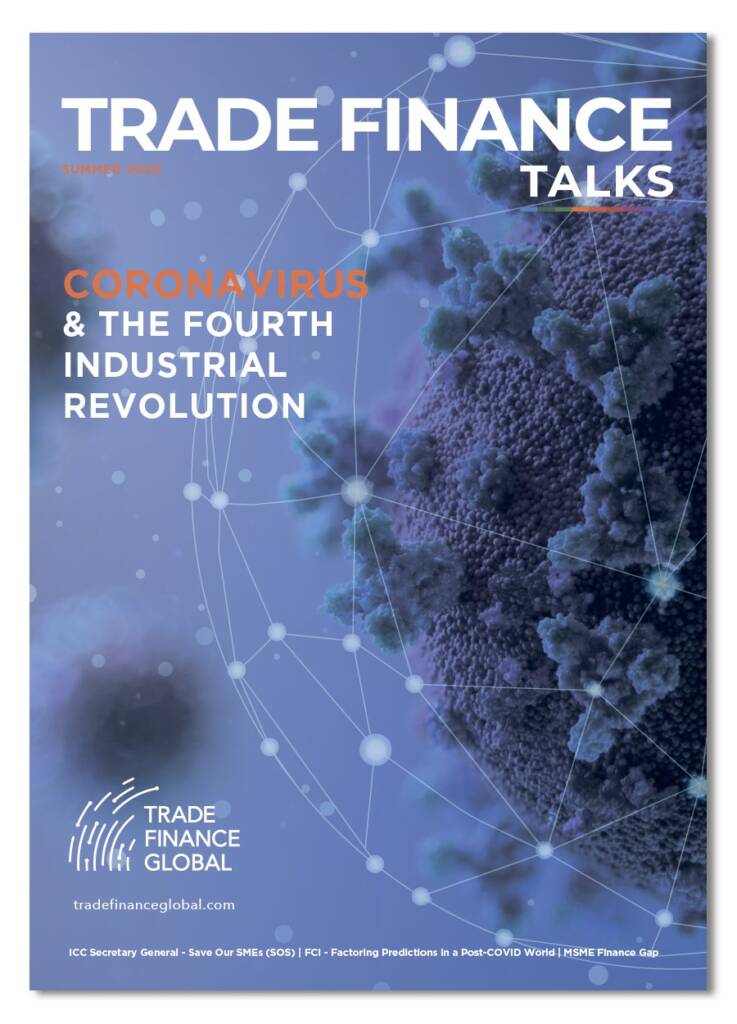Globalization has opened new business opportunities for emerging-market enterprises including small and medium enterprises. A modern supply chain process that links buyers, suppliers, and their financial institutions, helps local producers and exporters to participate in the global supply chain to grow their businesses, expand into new markets, and contribute to the economy.
But are products such as Supply Chain Finance really helping MSMEs or just larger banks? TFG’s Deepesh Patel (DP) caught up with Qamar Saleem (QS), Global SCF Lead and Regional Manager, Asia & Pacific at International Finance Corporation (IFC), on supply chain financing trends and its role in Micro, Small and Medium Enterprise (MSME) access to finance.

Supply Chain Finance (SCF) – A Correspondent Bank perspective
DP: Supply chain finance is relatively new in comparison to traditional trade finance. What is supply chain finance (from your perspective), who does it help, and how does it benefit smaller businesses?
QS: In this context, supply chain financing (SCF) is becoming an increasingly common vertical within the banking industry. The global credit crisis of 2008 forced trade finance seekers to look for alternatives as liquidity in supply chains became a major concern for businesses. This spurred an increased demand for SCF as businesses worked to maintain liquidity and their competitive edge.
Most international banks that work globally with multinational corporations to facilitate their suppliers and buyers in developing countries are familiar with the concept of SCF. However, it is a relatively new concept for domestic banks, which are more likely to have relationships with small and medium enterprises enabling a local SCF environment across clients, especially MSMEs, which are typically left behind in large cross-border SCF programs.
Against this backdrop, it is imperative that SCF is viewed beyond the ambit of loan-based products and instead is more integrated with the ecosystem rather than simply providing transaction loans. SCF can significantly contribute towards solving MSMEs’ access to finance while creating efficiencies for the real sector corporations.
To realize the full potential of the opportunity, a coordinated approach would be needed under a five-corner model where regulators, financial institutions, corporations, MSMEs, and SCF technology platforms collaborate and make concerted and result-oriented efforts. IFC is committed to creating SCF markets and engaging all stakeholders to ensure SCF for MSMEs becomes an impactful solution to support the growth of MSMEs across emerging markets[1].
Article: BCR’s Michael Bickers: Will Supply Chain Finance Overtake Traditional Factoring in 2020?


Asia, and the ‘trade finance gap’
DP: The oft-cited ‘trade finance gap’ ($0.5tn of the $1.5tn) is based on Asia. Can you give us a market overview of some of the developing markets in Asia?
QS: In Asia, manufacturing contributes over 25 percent of GDP in most countries including India, Bangladesh, Indonesia, and Vietnam. This leads us to establish estimates on the size and scale of supply chain networks in these countries, which is primarily based on the selection of industries most conducive to SCF. Some of these include size and number of corporates in specific industries, percentage of exports, and exposure of banks to those industries.
We have developed a top-down approach to quantify the opportunity in Asian countries. The model is based on the input-output data — quantitative economic information that represents the interdependencies between different sectors of a national economy, showing how output from one industrial sector may turn into input for another. Based on this methodology, we have assessed the SCF market opportunity for the following countries: Pakistan ($18 billion), India ($176 billion), Bangladesh ($13 billion), Indonesia ($81 billion), and Vietnam ($36 billion), coupled with over 40 percent SME contribution toward GDP.
IFC estimates a US$4.7 trillion finance[2] gap for small and medium enterprises (SMEs) in emerging markets.
IFC estimates a US$4.7 trillion finance[2] gap for small and medium enterprises (SMEs) in emerging markets. Working capital and trade finance are key components of that gap. In addition, an estimated $2.9 trillion potential demand from the informal sector brings the total financing gap to $7.6 trillion.
Our report on SME Finance Gap 2017, delves into a regional assessment of the SME finance constraint characteristics by region and firm size. The East Asia and Pacific region represent an overwhelming majority of the finance gap due to longer cash cycles, followed by Latin America and the Caribbean.
In terms of the domestic supply chain finance gap in emerging markets, IFC estimates that at least 20 percent of the $4.7 trillion[3] SME finance gap, is capital locked in supply chains, either in the form of receivables or inventory. Data from a World Bank survey show that while more firms use financial institutions for working capital (as opposed to investment capital), the proportion of working capital needs fulfilled by financial institutions is only 11.6 percent in emerging markets.
PODCAST: $5 trillion and counting – the MSME Finance Gap

Digitalization of Supply Chain Finance
DP: What are the top current trends in digitalization of supply chain finance, do you see the impact of the rise in Fintech on the financial institution business models?
QS: In a segment traditionally led by financial institutions, technology is shifting the market structure. Fintechs — supply chain finance providers, peer-to-peer (P2P) lenders, platforms and market places — are testing new business models aiming to expand the reach of supply chain finance through better unit economics and tailored product offerings, thereby emerging as competitors as well as partners to banks.
Increasingly, domestic financial institutions are partnering with technology platform providers to offer working capital solutions to key clients and their trading partners (for example, suppliers and distributors). To help the SMEs with their bottom-up request for financial support, financial institutions are taking the strategic approach of building strong partnerships with fintech firms and P2P platforms.
As a result, the initial model of bank-centric supply chain finance platforms — whereby financial institutions were both originators and funders — is changing into a model where a variety of specialized participants can cover a wider spectrum of needs to offer more tailored solutions.
DP: SCF programs have only been recently implemented in developing markets in Asia – what are the key trends in EDEs economy?
QS: Supply chain finance has evolved with the transformation of supply chain management. Before the impact of technology, supply chain finance meant optimizing working capital ratios and providing funding sources to companies. Today, supply chains have shifted toward a more collaborative and diffused structure. As a result, corporate anchors at the head of a supply chain need to ensure that a wider range of supply chain partners (for example, suppliers and distributors) have adequate working capital to ensure production and business continuity.
Read more – Supply Chain Finance Trends in Asia (Finastra Report)
Asia’s digital trade landscape heading into a new decade
At the same time, continued digital innovation and broader connectivity access has led to increased data accumulation and advanced analytic techniques. Mobile networks and end devices — phones, tablets, and point-of-sale (POS) devices — have enabled even the smallest players to participate in digitized supply chains. To further facilitate participation, new applications for ordering, purchasing, stock management, sales, and payments have been introduced — and are regularly updated — to the market. As a result, financial institutions and other providers can offer these services to previously underserved businesses, including those in emerging markets.
Now launched! Summer Edition 2020
Trade Finance Global’s latest edition of Trade Finance Talks is now out!
This summer 2020 edition, entitled ‘Coronavirus & The Fourth Industrial Revolution’, is available for free online, covering the latest in trade, export credit insurance, receivables and supply chain, with special features on fintech and digitisation.
 Australia
Australia Hong Kong
Hong Kong Japan
Japan Singapore
Singapore United Arab Emirates
United Arab Emirates United States
United States France
France Germany
Germany Ireland
Ireland Netherlands
Netherlands United Kingdom
United Kingdom











Comments are closed.